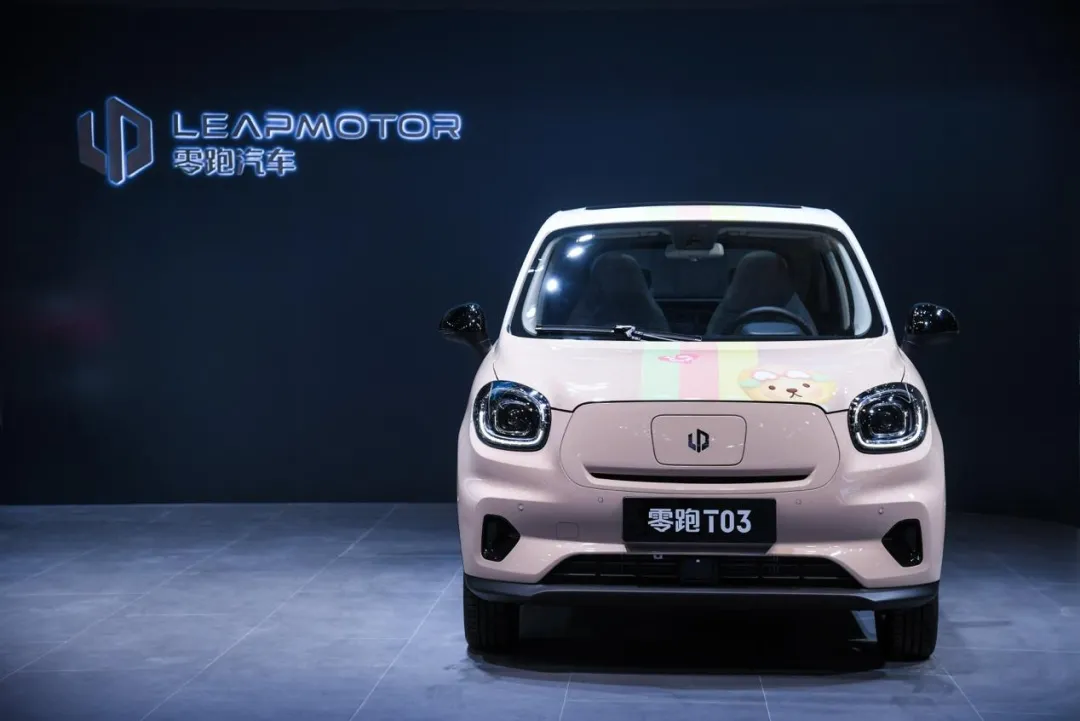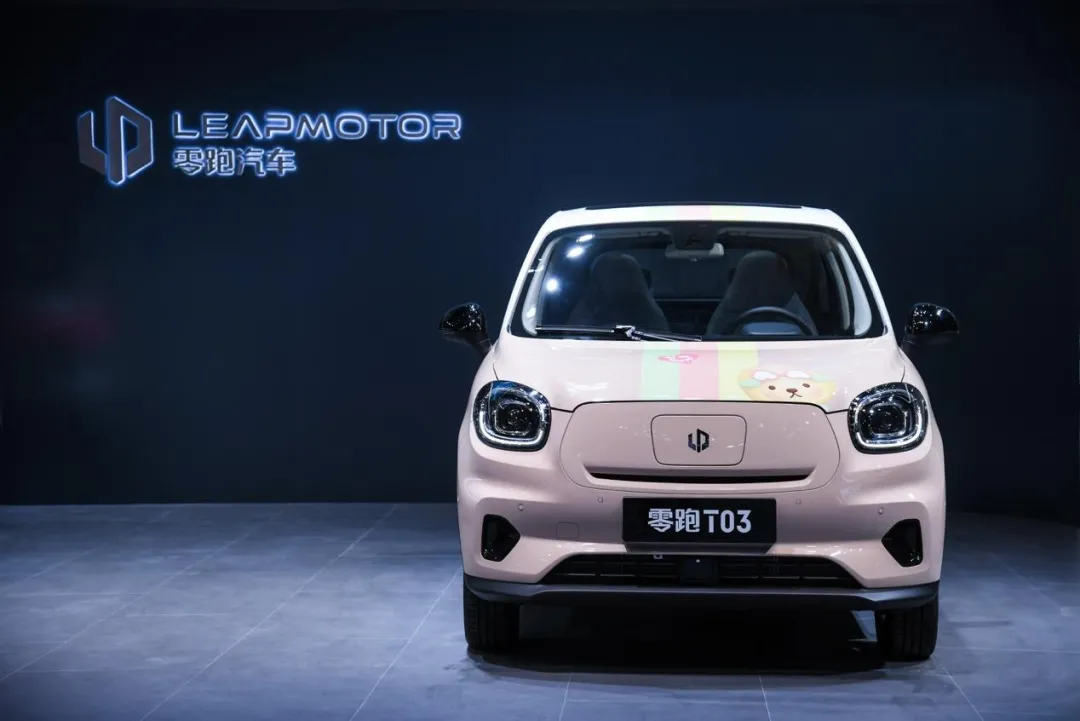Introduction: Regardless of the situation, every company has its own pace of development. For new startups like LI, it is more practical to focus on doing well on their own rather than comparing with others. In general, regarding the LI T03, it has more positive significance for itself, LI, and the industry as a whole.
The Shanghai new energy policy caused a stir in the industry, as it put electric cars priced below 100,000 yuan in the spotlight and thoroughly showcased this thriving market. According to the China Passenger Car Association’s data in April, in terms of the composition of pure electric vehicle sales, A0/A00 micro-sized vehicles accounted for a staggering 48%, making it the largest submarket for pure electric vehicles.
Regardless of the purpose of Shanghai’s attack on this market, it cannot hide its positive role in promoting China’s new energy development, including the Five-Star MINI beating the Tesla Model 3 myth, the marketing trend led by the Ola Cat, and the LI T03’s creation of superior product strength and so on.
For this market, the Five-Star MINI indeed has a lot of power, but it was actually the LI T03 that first activated this market. In May of last year, LI T03, which came into the market for the C-end market, aimed at the B-end market, which was dominated by the Chery EQ’s strong B-end impression. LI T03, with its core products points of a 403 km range and L2 assisted driving, jumped to become the benchmark for its class.
Good products are always popular with consumers. During its first full month of listing, LI T03 sold 879 units, setting a new monthly sales record for LI Cars. After LI T03, the Olo Cat, Five-Star MINI, and NETA V began to follow suit, thoroughly activating the small electric vehicle market and allowing China’s new energy to start anew in the post-subsidy era.
Establishing the benchmark for small electric vehicle product strength
With adequate performance, space, and subsidy advantages, Chery EQ, Beiqi EC series, and other small electric vehicles have become darlings of the B-end transportation market. However, we all understand that this is a false prosperity created under subsidy support. In fact, it has been proven that as subsidies gradually fade away, the above models will also fade into history.
It was not until last May when the LI T03 and later the Five-Star MINI and NETA V, heavy-duty models for C-end private markets, arrived that the micro-sized electric vehicle market was truly awakened. As for the Olo Cat, its story is divided into two parts; the earlier stage targeting the B-end market had poor results, resulting in the departure of former Ola CEO Ning Shuyong. It was only in the second half of the year that they turned their focus to the C-end market with considerable success.
So, why did the LI T03 first tap into the C-end demand in the micro electric vehicle market? What efforts did LI make to activate this market? What is the market effect of the LI T03?
On May 11th last year, the LYZ Zero T03 officially entered the market. In terms of brand promotion strategies, LYZ emphasized the importance of “high configuration for small cars”, which has since become a powerful slogan. In the past, in order to control costs and obtain subsidies, it was common practice for small cars to have low configurations.
To win over genuine C-end consumers, LYZ needed to take a different approach to its product strategy rather than targeting B-end markets. Ideally, the company would have increased capacity without raising prices, and the increased capacity had to meet consumer demands directly. This is where “high configuration” comes in, and with it we can analyze how LYZ made the T03 stand out.
Firstly, its range. At the time, the typical range of small electric vehicles on the market was around 300 kilometers, with a variation between 250-350 kilometers. This was the minimum range needed to obtain subsidies. However, LYZ chose not to follow this subsidy strategy. Instead, the T03 became the first small electric vehicle to break the 400-kilometer range barrier, with a maximum range of 403 kilometers.
Furthermore, the LYZ T03 uses batteries from CATL (Contemporary Amperex Technology), the world’s leading power battery brand. These batteries not only have guaranteed performance, but also ensure safety, although they are not cheap. This is another area where LYZ is quite generous. In contrast, almost all other similar models use batteries from second-tier or lower brands, resulting in poor and unpredictable quality.
By significantly increasing the range to 403 kilometers, the T03 not only became the benchmark for similar class-range vehicles, but also had a profound impact on the market. For example, in the 2021 version of the Ora Cat, its highest range also increased to 405 kilometers, but the minimum suggested retail price is 84,800 yuan. In comparison, the lowest price for the 403-kilometer version of the LYZ T03 is only 59,800 yuan.
Next, let’s talk about motor power. Prior to the launch of the LYZ T03, the electric motor power output for small electric vehicles on the market was typically around 40 kilowatts (for example, the Chery EQ4 at 41.8 kW, the BAIC EC345 at 45 kW, and the Ora Cat at 35/45 kW). In contrast, the T03 comes standard with a 55 kW motor. As a result, during the T03 test drive event, LYZ deliberately arranged for a track section to demonstrate the T03’s powerful motor capabilities.
Finally, the T03 is equipped with an L2 intelligent driving assistance system, making it the first vehicle in its class to feature such a configuration. In the past, small electric vehicles were mostly designed for B-end travel markets, and advanced features such as assisted driving were not commonly installed. However, for an intelligent electric vehicle aimed at the C-end consumer market, assisted driving is essential.Except for the range, motor power, and L2 assisted driving, T03 has many “upgraded” configurations, which will not be elaborated here. Overall, considering only the three most important configurations of range, power, and intelligence, as well as the price range of 5.98-7.58 million yuan, the T03 of LI is undoubtedly the benchmark of products of the same level.
Of course, the T03 not only achieved its own success but also contributed to LI and the market. After the activation of the C-end market by the T03, Wuling MINI began a heavy attack on the micro-electric vehicle market, Euler Black Cat turned from the B-end to the C-end, and the NEV warfare was brought from the two-door car to the SUV category by NETA V.
Since then, the small micro-electric vehicle market has been completely activated and, together with the mid-to-high-end pure electric vehicle market, has become the two important forces driving China’s new energy development. Last year, China’s new energy subsidy declined to 10%, but the new energy growth rate increased against the trend by 13.3%. These two markets made a significant contribution to the trend-bucking growth.
“Rely on Ability to Look Good”
As far as the development of the new energy industry is concerned, the vast majority of models died in the subsidy bed, including the once-famous Beiqi New Energy EC series, Chery EQ, etc. T03 can minimize the subsidy factor and truly leverage the market, which is not easy to achieve.
So why can LI understand the market demand and launch the right model at the right time? When T03 was launched in May last year, LI’s founder and chairman revealed to the media the reason, “First, this car was supposed to be launched at this time, and we have completed all the mass production preparations. Second, LI is optimistic about the micro-car market.”
Wu Wangming, LI’s product marketing director, added, “From the customer’s demand itself, the car has become relatively popular and has entered Chinese families. There is more demand for the second category of just-needed cars, which is commuting, and families still need a second car for commuting. Small cars are more flexible and occupy fewer resources in the city, with unique advantages.”
From the words of Zhu Jiangming and Wu Wangming, it is not difficult to see that LI’s original intention for launching T03 was to target the market, including first-tier and second-tier cities, commuting, the second car of the family, just-needed demand and other core factors, rather than just for subsidies like the previous small electric cars. Now it seems that the results are as they expected, even exceed expectations, after all, it has completely activated the market of small micro-electric cars.
Last year, from mid-May to December, LI sold a total of 10,266 units of T03. It is worth mentioning that nearly 80% of car owners chose to purchase T03 as an additional vehicle, and nearly half of the car owners chose the top luxury version. In addition, the major sales cities of T03 are Hangzhou, Shanghai, and Tianjin, which are all special and first-tier cities. The success of T03 not only achieved its own success but also contributed to LI.# Review of LI Auto’s Development
LI Auto’s development has not been smooth sailing. Due to the fact that its first car, the S01, is a niche sports car, the market was not receptive and sales were only around 1,000 units in 2019, which is far from NIO, WM, Xpeng, and Naza’s tens of thousands of units. It was not until the arrival of the second car, the T03, that LI gradually emerged from its low period and started to rise towards the peak.
After achieving a good harvest last year, LI Auto will challenge itself to higher goals this year. LI’s co-founder, director, and president, Wu Baojun, stated at the Shanghai Auto Show that “LI’s sales target this year is more than 60,000 units.” Based on LI’s current performance, Wu Baojun’s sales target is not exaggerated.
Data shows that in April, LI Auto’s deliveries reached 2,770 units, an increase of 866% year-on-year and 278% month-on-month. From January to April this year, LI delivered a total of 14,608 units. It is worth mentioning that in April, LI’s brand/T03 ranked fourth in terms of insurance registrations among new energy vehicles. Among the C-end insurance registrations, T03 was registered 2,496 times in April, ranking fifth in the A00 pure electric vehicle segment.
Due to its increasing sales, LI’s brand reputation has also significantly improved, and its industry evaluation has changed from an edge new force to a leading power in the new force’s second echelon. T03 has only been on the market for one year, but LI’s brand has changed so significantly that it is truly remarkable.
LI’s achievements and future prospects have not only attracted the attention of the industry but also led to cooperation with various local governments. In January of this year, the investment-savvy Hefei government participated in LI’s B round of financing and invested 2 billion yuan in LI. In March of this year, the Hangzhou Qiantang New District signed a New Energy Project Cooperation Agreement with LI.
Of course, LI, despite its bright future, still has some difficulties. For example, although T03 has achieved great success, its sales volume is still much lower than that of the Black Cat, which has weaker product strength. This also reflects the fact that LI’s marketing needs to be improved. In terms of branding, the introduction of low-priced T03 has put pressure on the subsequent launch of LI’s medium-to-high-end models.
However, every company has its own development pace. For new companies like LI, doing their own thing is more practical than comparing themselves with others. Overall, T03 is more meaningful for itself, LI, and the industry as a whole. In the first year of its launch, LI’s annual theme for T03 was “Be Beautiful with Ability,” which is truly fitting.
This article is a translation by ChatGPT of a Chinese report from 42HOW. If you have any questions about it, please email bd@42how.com.
